5 Types of Trailer Hitches
There are many ways you can use your truck—whether it's for work or play—and so there are many types of trailer hitches to match. These options can be used for adding towing, storage (if your bed storage isn't enough), and other applications to suit your individual truck and driving activities.
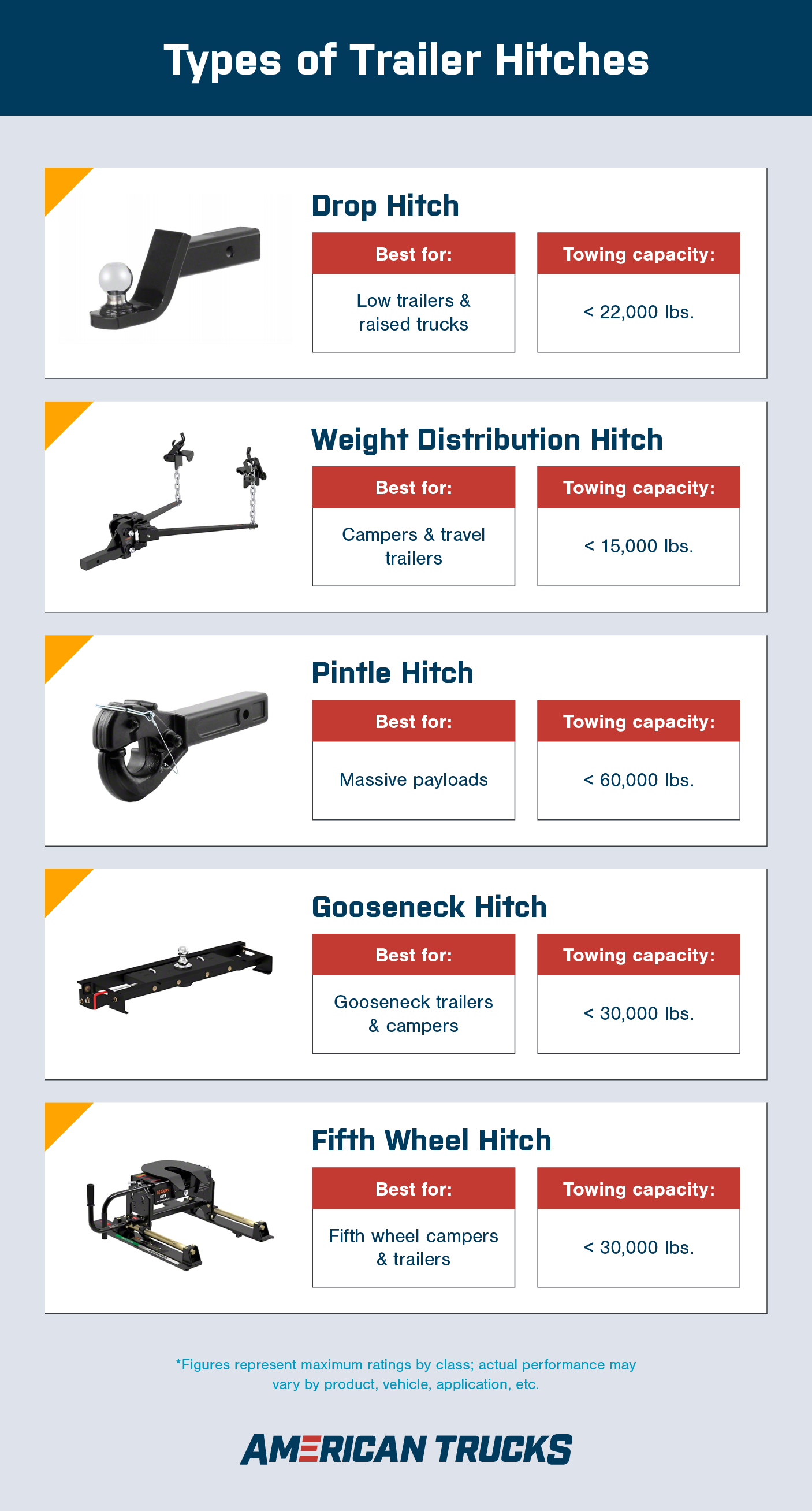
Drop Hitch
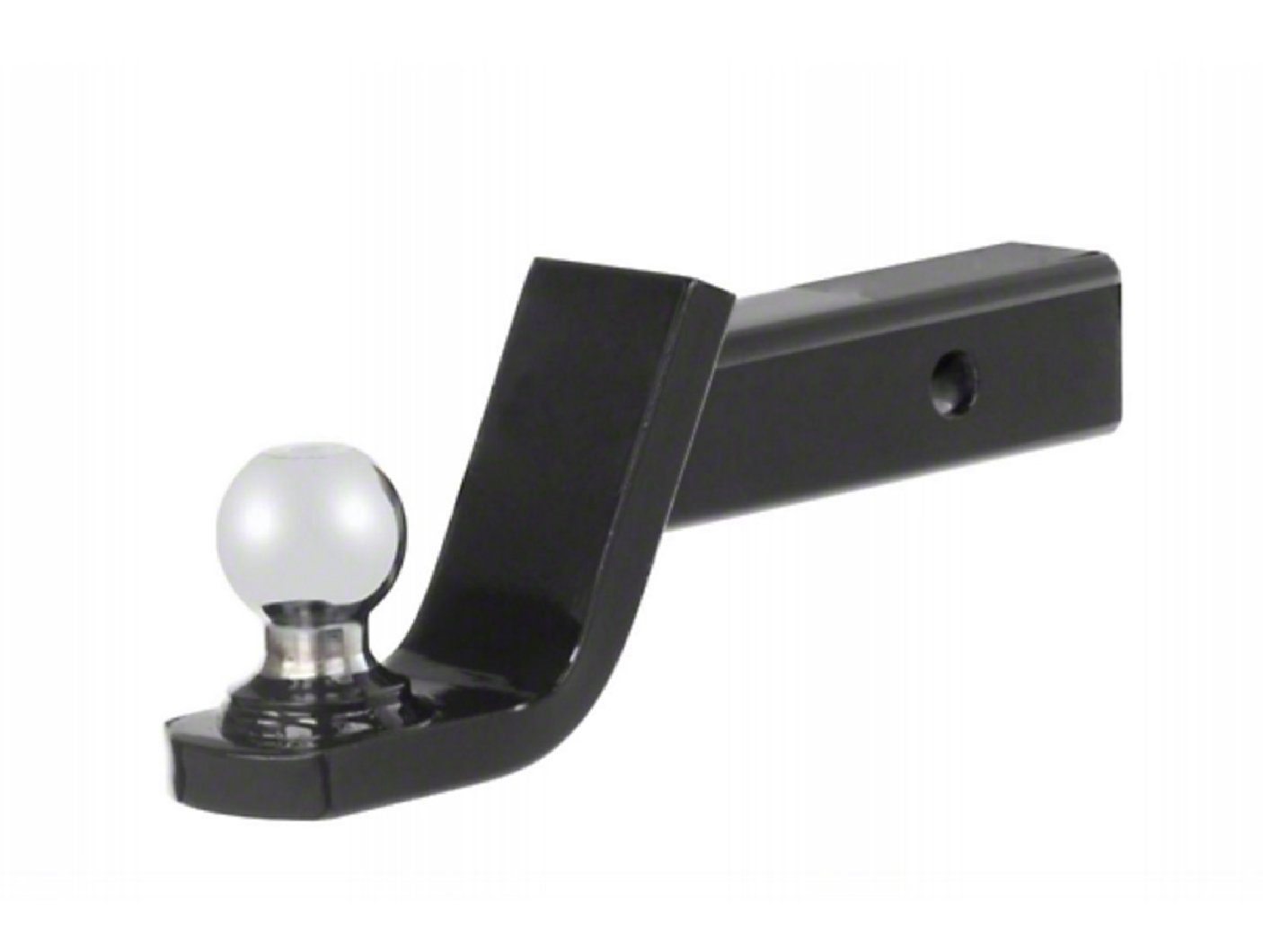
A drop hitch—as you might have guessed—drops the height of the hitch ball so you can safely tow lower-to-the-ground trailers. It's basically a downward curved or slanted extension you insert into the hitch receiver, allowing you to keep the trailer vertically level as you drive.
Let's say your truck's receiver tube sits about 21" off the ground. An average trailer coupler (the part that fits onto the hitch ball) is around 16" high. That few inches may not sound like much, but in this case, your trailer would have to tilt backward to reach the ball, causing the rear of the trailer to draw closer to the road, backloading the weight and potentially increasing trailer sway.
Best for: Trailers that are lower than the truck's standard hitch
Towing capacity: Up to 22,000 lbs.
Weight Distribution Hitch
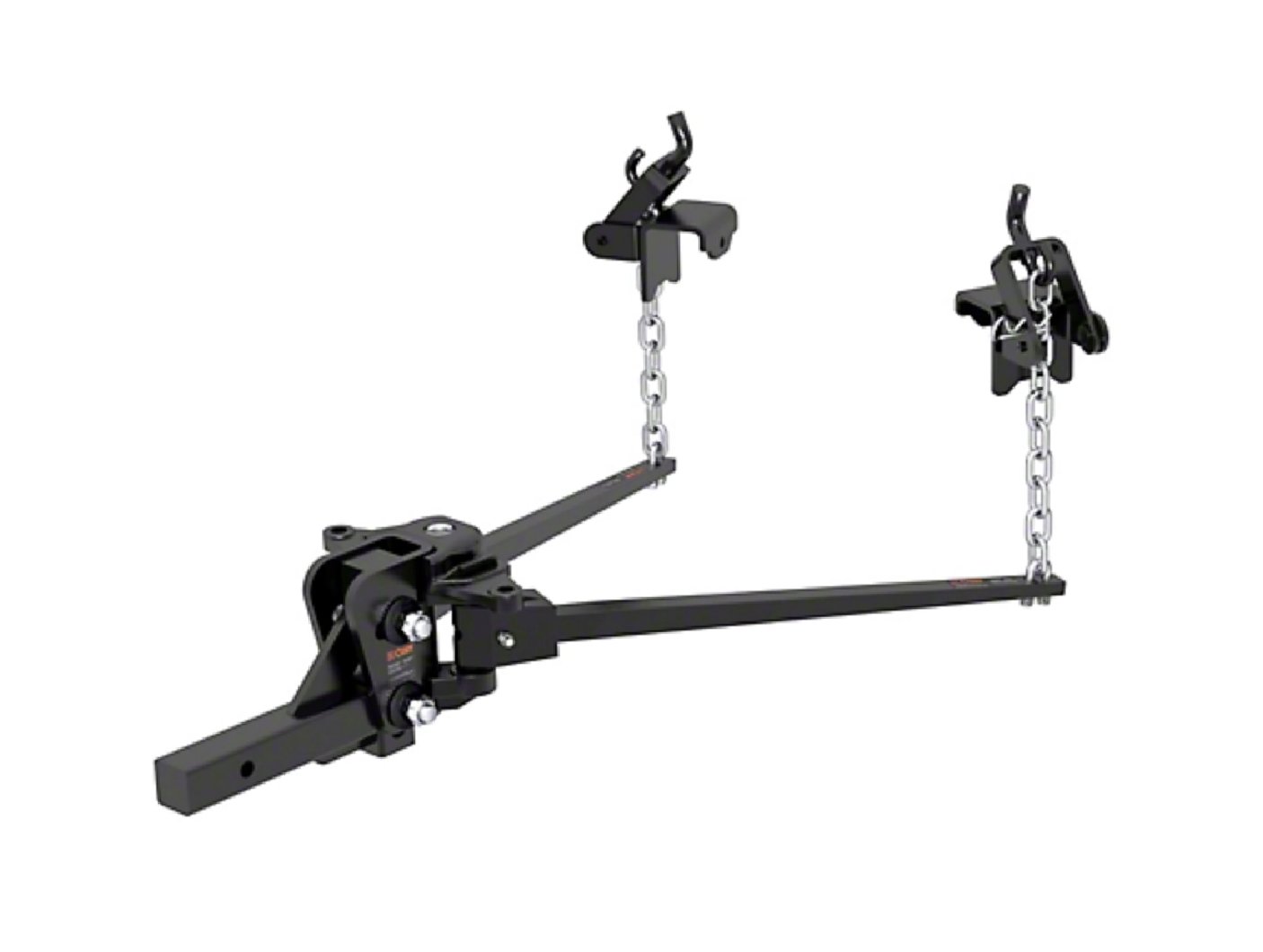
Weight distribution hitches (also called weight distributing, load-equalizing, and load leveler hitches) fit into hitch receivers to improve control by redistributing some of the tongue weight more evenly.
To do this, these hitches use two long spring bars to create counterpressure. The tension adds leverage to push up against the truck as the trailer weighs down on the hitch. This helps keep both the truck and the trailer level at the hitch point for dramatically better handling.
Best for: Campers and travel trailers that may reduce handling
Towing capacity: Up to 15,000 lbs.
Pintle Hitch
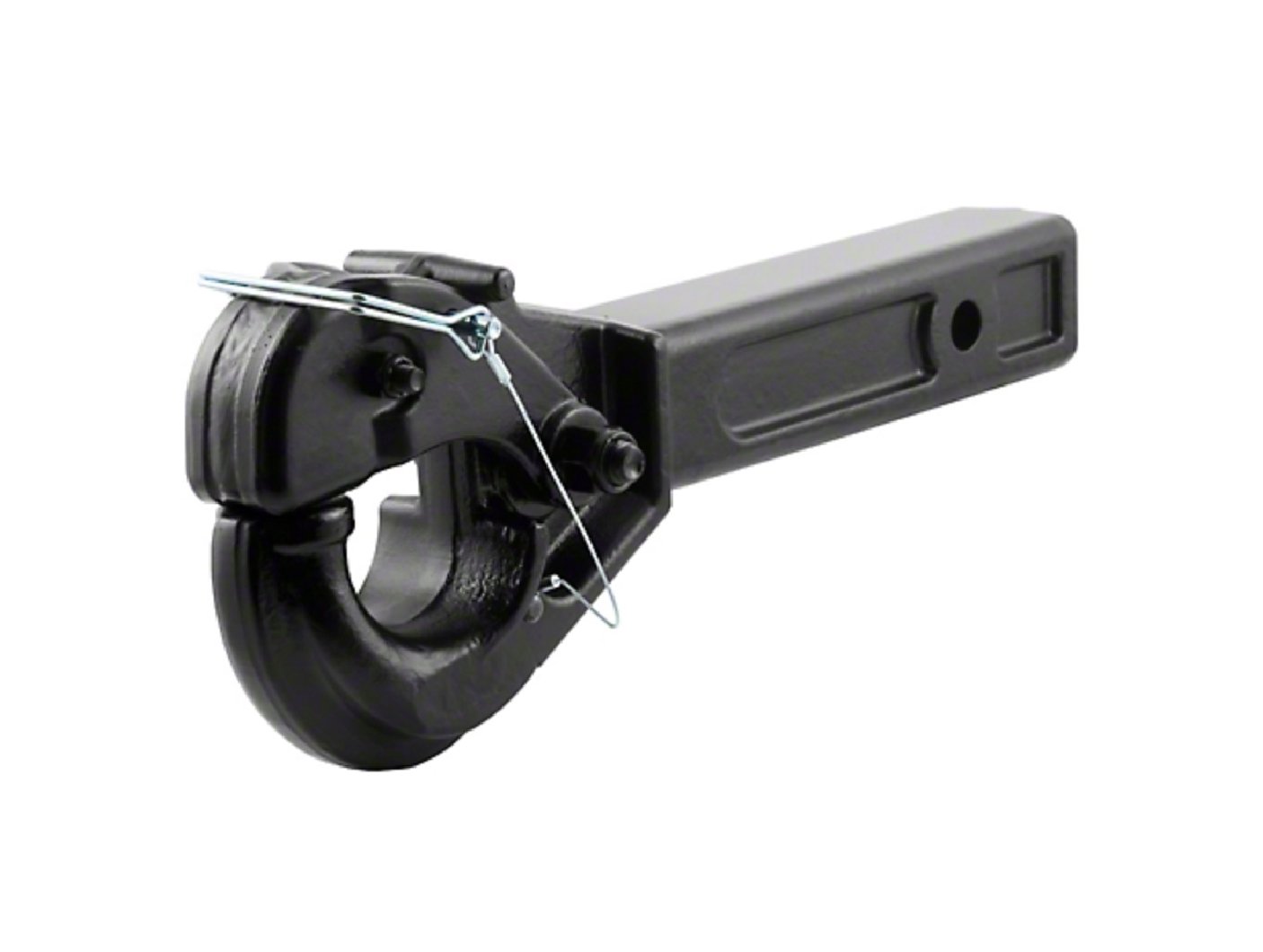
Pintle hitches use a latch-and-ring design for exceptionally heavy-duty applications. The latching hook component (called the pintle) attaches through the hitch receiver for pickups or directly to the frame for industrial trucks. The trailer is secured to the pintle by a mounted ring, called a lunette or an eye.
Don't be fooled by this seemingly simplistic option—it's the hitch of choice for commercial use. For everyone else, it can likely handle far more weight than your truck is rated for.
Best for: Massive payloads, especially for commercial and industrial use
Towing capacity: Up to 60,000 lbs.
Gooseneck Hitch
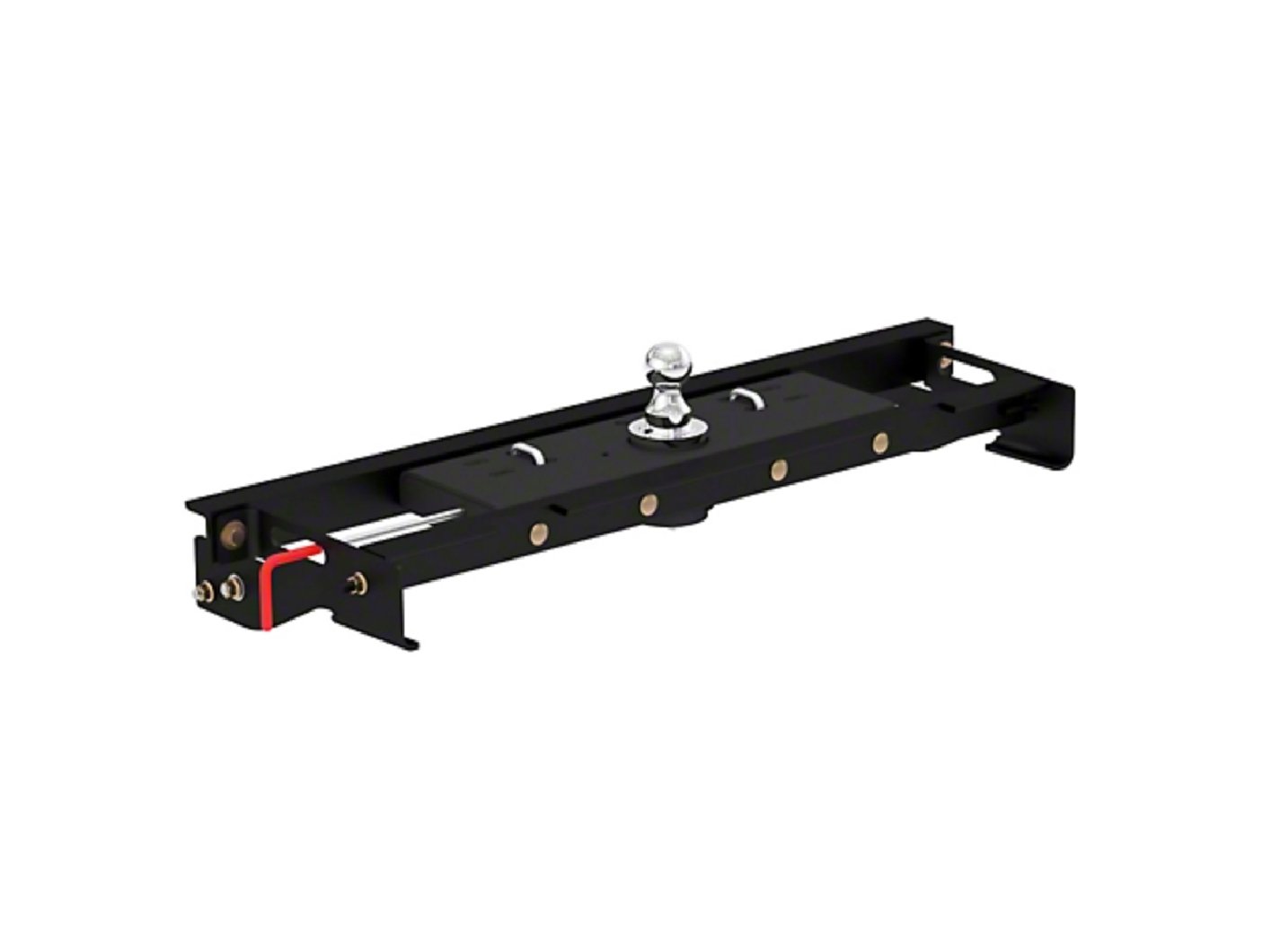
These heavy-duty hitches affix a hitch ball in the truck bed so trucks can pull gooseneck trailers and campers. These hitch balls help maintain control and maximize towing potential by shifting the tongue weight from the rear of the truck to above the rear axle.
These hitches come in a variety of layouts depending on the design of the truck. Some pickups come with towing prep packages like a puck system or a fifth wheel base. If you have a truck without a stock towing setup, you should be able to install a traditional gooseneck hitch kit without too much trouble.
Best for: Gooseneck trailers and campers
Towing capacity: Up to 30,000 lbs.
Fifth Wheel Hitch

Similar to a gooseneck hitch, a fifth wheel hitch shifts the hitch point from the back end of the truck to the bed above the rear axle. The difference is that these hitches have the coupling piece built in and are designed specifically to connect to fifth wheel campers and trailers by accepting and locking in their kingpin.
Fifth wheel and gooseneck hitches are closely related, and you can easily install adapters to switch from one to the other.
Best for: Fifth wheel campers and trailers
Towing capacity: Up to 30,000 lbs.











